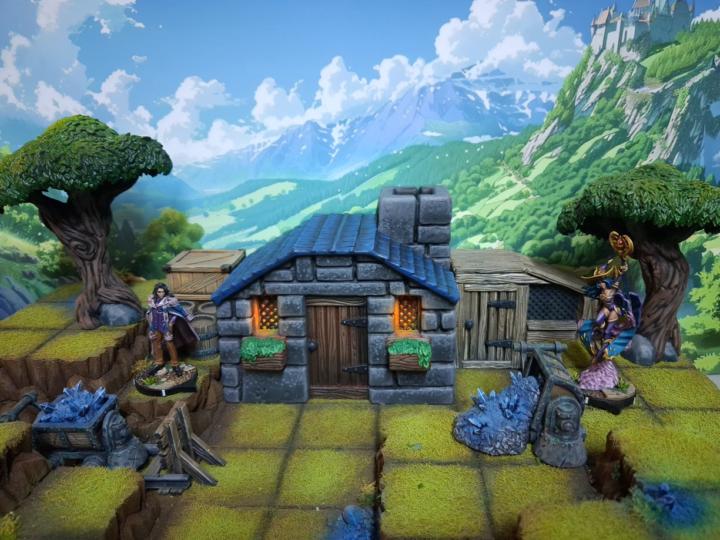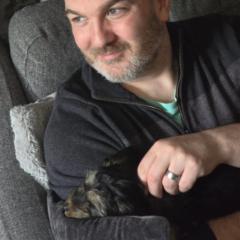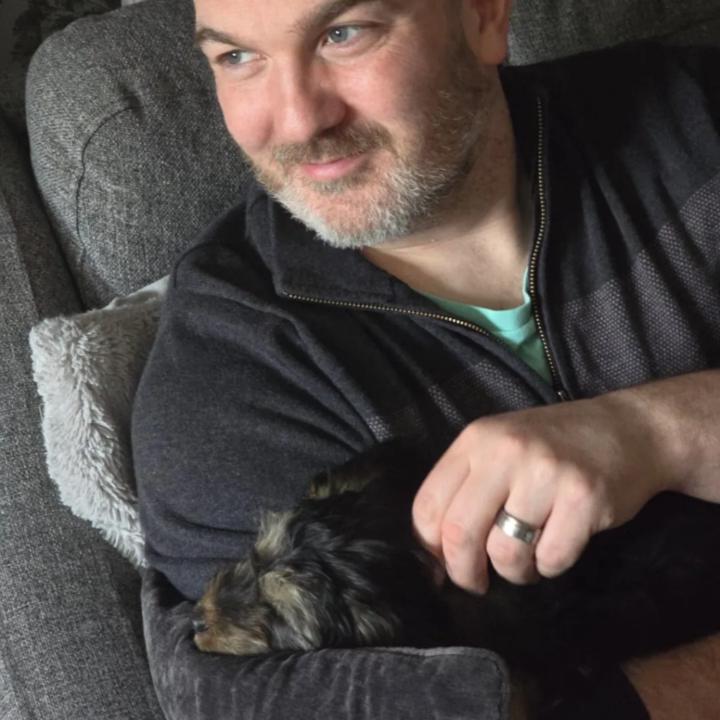Activity
Mon
Wed
Fri
Sun
Jan
Feb
Mar
Apr
May
Jun
Jul
Aug
Sep
Oct
Nov
Dec
What is this?
Less
More
Owned by Dan
Your miniature mastery starts here: sculpting, printing, painting & pro insights to elevate your skills!
Memberships
Skoolers
181.9k members • Free
Big Business Entrepreneurs
18.1k members • Free
19 contributions to Lion's Tower Miniature Academy
How to Market Your STL Files Online (From Free Methods to Paid Shortcuts)
How to Market Your STL Files Online (From Free Methods to Paid Shortcuts) Build visibility, getting in front of the right audience, and growing your miniature business — without burning yourself out. Marketing your miniatures is just as important as sculpting them. You can upload the best model in the world, but if nobody ever sees it, it might as well be living inside your hard drive in a little digital cave wondering why adventurers never visit. And remember my previous post – most of the time on many of these platforms you’ll need to bring your own traffic. What follows is a deep dive into the most effective marketing methods available today — starting with free but high-effort approaches, and moving gradually toward paid shortcuts that save time at the cost of money. ______________________________________________________________________________________________________ FREE / HIGH-EFFORT MARKETING METHODS These cost nothing but require consistency, patience, and a willingness to put yourself in front of an audience. ______________________________________________________________________________________________________ 1) Build a Social Media Presence (TikTok, Instagram, YouTube Shorts) This is the foundation of modern miniature marketing. What to post: - Turntables of your finished models - Quick videos of ZBrush in action - Painting progress shots - 3D printed versions of your models - Before/after comparisons (concept to sculpt or sculpt to print, or print to paintjob) - Terrain builds, print tests, failed prints (people actually love these) Why it works: These platforms love visual content and push it hard through their algorithms. Miniatures are perfect short-form content: highly visual, easy to understand, and satisfying to watch. Effort level: High. You need to post 3–5 times a week for momentum and you’ll need to be resilient because growth will be slow but long term you’ll be rewarded for consistency. Results: Slow start, but exponential growth once a few posts hit the algorithm. The traffic quality is excellent — people who follow you for miniatures are likely to buy miniatures.
If I Started Selling Miniatures Today… Here’s Exactly What I’d Do
If I were starting my miniature-selling journey today with absolutely nothing — no audience, no platform, no clue where to upload anything — this is exactly the roadmap I wish someone had handed me. A friend messaged me yesterday asking how to make money from his sculpts, and as I walked him through the whole thing, it struck me that half the miniature community is trying to solve the same puzzle in the dark. So rather than repeat the advice one DM at a time, I thought I’d turn it into something useful for everyone here. This isn’t theory, guesswork, or “I watched a YouTube video so now I’m an expert” fluff. It’s what I’ve learned from years of selling minis, working across multiple platforms, getting things wrong, correcting course, and eventually figuring out what actually moves the needle. If I were starting again, this is the exact blueprint I’d follow — the platforms I’d prioritise, the ones I’d treat with caution, and the strategies that genuinely make a difference when you’re a one-person operation trying to get your sculpts out into the world. So grab a drink, settle in, and let’s get you selling your minis in all the places that matter. ***Before we start I want to make a note about SEO (Search Engine Optimisation). Get your preferred home page established early (a landing page on your own domain or your Patreon would be the best options). Any time you create a product, make sure you put a link back to that URL on there. Back Links (links from other websites to your own) are a big factor in SEO, and you shouldn't underestimate the power that a link on every product listing on every platform could possibly be for your home page!*** TIER 1 — HIGH TRAFFIC, HIGH VISIBILITY, HIGH POTENTIAL 1) Cults3D Traffic: roughly 8–10 million visits per month Commission: around 25% Why It’s Good: best traffic-to-sales ratio for miniatures and no monthly store fees My take:Cults is slightly chaotic behind the scenes, but it genuinely gets results. If you're going to sell STLs anywhere, this is the platform where most creators see their first real traction. Not the cheapest commission, but the visibility makes up for it. Bonus: it can import your models directly from Thingiverse, which saves a huge amount of time.
The Sculptor’s Guide to SEO Product Descriptions - How to write listings that humans enjoy and Google can actually understand.
Following on from yesterdays post about where to sell your STL files, I wanted to do a bit of a deeper dive into SEO for miniature listings – getting your products discoverable by search engines and found by customers! Search engines aren’t magic, and marketplaces won’t automatically put your creations in front of the right people just because you’ve uploaded something cool. If you want your miniatures to be discoverable — both on Google and within platforms like Cults, Printables and CGTrader — then SEO becomes one of the most important tools in your arsenal. Good optimisation helps your work appear in searches, reach new audiences, and generate sales without relying on the platform’s algorithm deciding to bless you that day. To show you how this works in practice, here’s an example product listing built with SEO in mind, and afterwards I’ll break down exactly what’s happening and why it matters. ______________________________________________________________________________________________________ **SEO-Optimised Example Product Listing** Human Female Wizard – 32mm Scale STL | Pre-Supported | Painter-Friendly Fantasy Miniature If you’re looking for a character who brings a bit of arcane menace to the tabletop, this Human Female Mage ticks all the boxes. She’s sculpted specifically for 32mm scale gaming, with exaggerated, painter-friendly detail that reads beautifully at arm’s length and prints cleanly even on modest resin printers. I’ve gone for a poised, mid-spellcasting stance — one hand crackling with magical energy while the other braces an ornate staff crowned with a runic crystal. The robes have layered fabric, deep cuts, and a clean silhouette that makes shading and highlighting an absolute breeze. Painters will get plenty of joy out of the crisp folds, subtle jewellery, and texture shifts from cloth to leather to metal. Everything has been sculpted with the usual care for printability: no unnecessary micro-detail, no nightmare thin bits, and nothing that will collapse into a sad puddle on the build plate of your 3D printer!
3
0
40 Members Already! Time for a Community Show & Tell
Hey everyone! We’ve just hit 40 members here on Skool — which is fantastic, and honestly a little surreal given how fast things have grown in the last couple of weeks. So a massive welcome to all the new faces, and a genuine thank you to everyone who’s jumped in, contributed, asked questions, or simply lurked with intent. You’re all very much appreciated. To celebrate hitting this little milestone, let’s get a bit of community sharing going.What are you working on at the moment? Sculpts, mini painting, terrain, digital concepts — whatever you’re creating, drop a picture in the comments. It’d be great to see what everyone’s up to. I’ll kick things off with my Crystal Collapse display board. I’ve just finished painting the Miner's Cottage and the trees (still need to highlight the canopies), and I’m definitely going back to fix the OSL on the cottage windows — the orange isn’t quite doing it for me, so we’re heading into warmer yellow territory instead. Looking forward to seeing what you’re all working on — let’s make this place a proper hub of creative energy!
3
0

Come and introduce yourself
Hi, thanks for coming! I just started up this Skool community in September so I'm going to be inviting people in and trying to build this community up. If you've arrive here and are wondering why there's not much going on, this is why. I'm working on my first proper zbrush sculpting course right now (check it out here https://dankelly1.gumroad.com/l/uxser) and it's almost complete as of the end of October. I'd love for this community to be a hub for like minded people who want to learn about the full ecosystem of miniatures. Whether you're doing this for relaxation and mindfulness or you want to turn miniature sculpting into a career and free yourself from the shackles of your 9-5 job, I'll be here to help you every step of the way! Please post an introduction and let us know who you are, what you do for a living, what level your miniature experience is at, and what skills you're looking to develop. Oh, and where you are in the world - it would be great to organise some in-person meetups if we start getting groups of people with common geography! Everyone is in the same boat so don't be shy! Oh, and if you had to pick one and banish one - Lord of the Rings or Starwars?! 😉
0 likes • Nov 7
@Adam Morris Thanks Adam! It's been a real pleasure watching your progress through our sessions and seeing your ideas coming together has been awesome! If you want to post anything about your project, processes, game development or anything else to do with it here please do feel free!
1-10 of 19
@dan-kelly-4221
A business owner and professional sculptor and artist. I also have background in facilities management and HSE management.
Active 9h ago
Joined Aug 26, 2025

